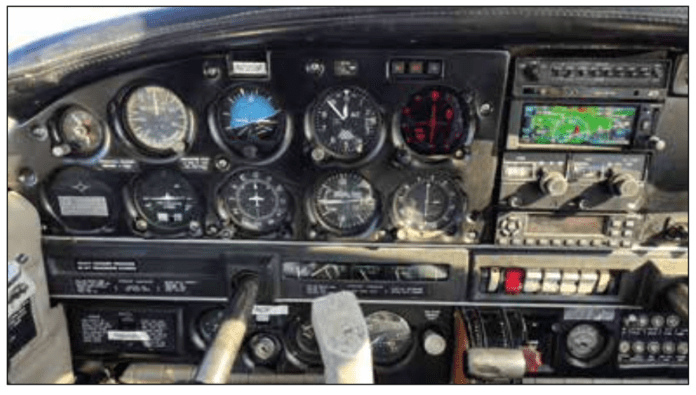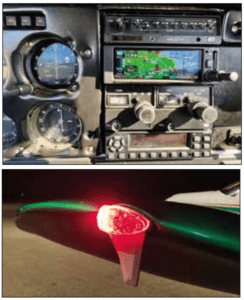
This month’s panel for planning is on a Piper PA-28-151 trainer, which sported the same King analog radio package it had when it left the factory in 1976. A primary trainer serving hard duty on the line at Learn2FlytCT in central Connecticut, the goal was to breathe some new life into the 47-year-old panel on a tight budget.
ADS-B Out is an obvious requirement for operating in the northeast airspace, sandwiched between the New York and Boston B spaces, plus operating in busy Class C and D.
While not intended as a hard-IFR machine, the added utility for basic IFR training—including flying RNAV approaches—steps it up on the training line, and works we’ll for getting back in when the weather tanks.

It was stacked, top to bottom, with a King KMA20 audio panel (with aftermarket PS Engineering standalone intercom), one KX170B navcomm with glideslope and one with VOR/Loc only, KT78 Mode C transponder, King KR86 ADF and traditional round-gauge flight instruments. There’s also an existing Piper wing leveler single-axis autopilot, but it’s inoperative. Students will be hand-flying this bird, anyway.
The cavity tube-driven King transponder was a ticking time bomb, ready to fail at any time, so Garmin’s GTX 325 digital Mode C transponder and a new altitude encoder make sense for reliable squawking. The aircraft had an old Whelen strobe system, complete with an aging, noisy and heavy power supply.
MODERN PUNCH
Worth mentioning is that this install was done in two stages, and the first upgrade was the uAvionix skyBeacon ADS-B system to comply with the airspace mandate. It’s a $2100 system, plus installation, which with minimum modification of the existing strobe system (it uses the existing strobe light panel rocker switch) might run $3500 total. As I’ve preached for years, if there’s any doubt about the existing transponder’s longevity and reliability when doing an ADS-B upgrade, the economics make better sense using a transponder that has ADS-B Out capability. Garmin’s GTX 325 Mode C transponder is $2510 and the GTX 335 ADS-B Out model is $3495. For ADS-B Out and In, plus Bluetooth traffic and weather streaming, the GTX 345 fits a lot of applications.
Garmin’s GNC 355 WAAS GPS/comm with the GI 275 electronic CDI ($11,100 plus installation) is IFR approved, and it doesn’t have VHF ground-based nav receivers. With plenty of RNAV approaches around, including one at the school’s home base, students and instructors won’t miss the VOR and ILS capability.
For a one-week downtime and roughly $17,000 investment, this aging trainer gets decent utility.
Want to feature your panel in our Panel Planner 101 column? Drop us a line.

